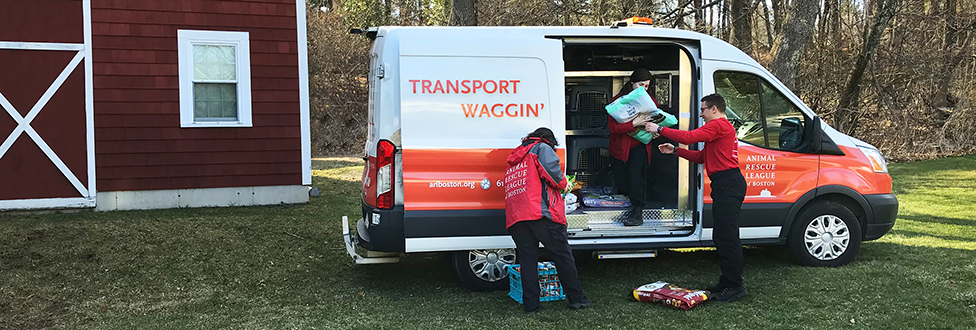News, ideas & inspiration from industry leaders

Helping Communities During COVID-19: 3 Tips for Starting a Pet Food Pantry
The Animal Rescue League of Boston’s Keep Pets S.A.F.E. (Supporting Animals Facing Emergencies) initiative, initially funded by a grant through PetSmart Charities, has been going strong since the beginning of the COVID-19 pandemic. With the pause button pressed again in many states in the country, we recently reached out to ARLB’s Director of Marketing, Lisa Graham, for tips for agencies wishing to start a similar program in their community.
Back in March, ARL Boston rolled out their mobile fleet to make safe and contactless deliveries of food and other pet necessities to the greater Boston metropolitan area through Keep Pets S.A.F.E. “We were able to implement this amazing community program right from the start,” says ARL Boston’s President & CEO, Edward Schettino, DVM, PhD, MBA. “We quickly shifted our programs to focus on communities that need assistance.”
Here’s a snapshot of the program in action, as of late last month:
- ARLB received over 230 requests from pet owners via the Keep Pets S.A.F.E. hotline
- Direct residential delivery of pet food and supplies to 162 residents – some with multiple pets
- Direct elder group housing delivery of one month of pet food and supplies for 16 cats and 15 dogs at two Boston housing residences managed by ARLB partner, Boston Senior Home Care
- Provided critical veterinary care services with animal pick up and drop off to 15 clients
- Provided telemedicine appointments to 20 clients
Inspired by the impact this initiative has had?
ARLB’s Director of Marketing, Lisa Graham, shares these 3 tips for agencies wishing to do something like this for the pets and people they serve:
1. Identify Your Strengths
“There is more than one way to help animals and communities in need during this pandemic, so organizations should identify their own individual strengths,” says Graham. “For ARL, we identified one of our strengths as having a robust mobile fleet of vehicles and drivers. The logistics of Keep Pets S.A.F.E. were fairly simple to figure out once we realized we already had the basic infrastructure. Determine your organization’s existing strengths, and build your program from there.”
2. Enlist Your Volunteer Army
“Build out a network of volunteers to help execute your plan,” recommends Graham. “ARL is currently utilizing mostly staff, but for Keep Pets S.A.F.E to remain sustainable, we will need to rely more heavily on trained volunteers.”
3. Think Out of the Box (or Grocery Bag, as the case may be)
Here’s a simple, genius tip for stocking your pantry: To keep food pantry supplies up, Graham suggests smaller organizations, in particular, can “call their local grocery and pet supply stores to see if they have any returned/opened or damaged food containers that volunteers can pick up free of charge.”
Running a pet pantry program and have additional tips to share? Please leave a comment!
Learn more
Video: ARLB delivers over 51,000 meals to cats and dogs across Massachusetts



We run Pets-Meals-on-Wheels at https://ohlonehumanesociety.org/
https://mailchi.mp/caf252c96d5e/2019-fall-ohs-enewsletter-658094?e=7f037a034e
I’d say to develop a group of volunteers to re-bag food to smaller portions was essential for us. Many of our clients are homeless and we distribute weekly as they cannot keep bigger bags. It’s actually a good volunteering opportunity for families with children. We supply bags, labels etc.
When the Pandemic started the demand skyrocketed. We had a successful pet food donations drive and run into storage issues (the only bldg. we have is our Wildlife Rehabilitation Center, no storage space). How do you deal with the storage?